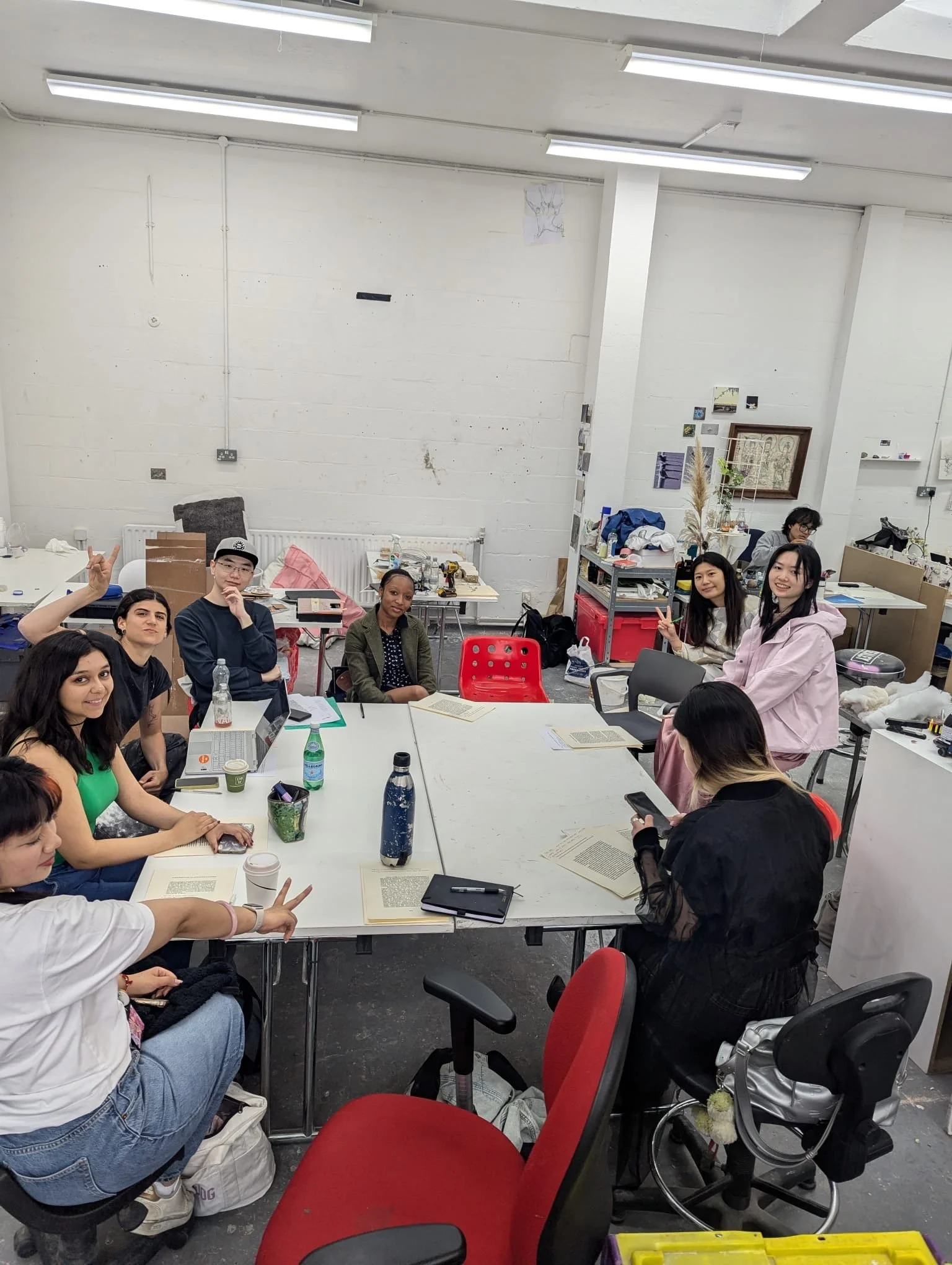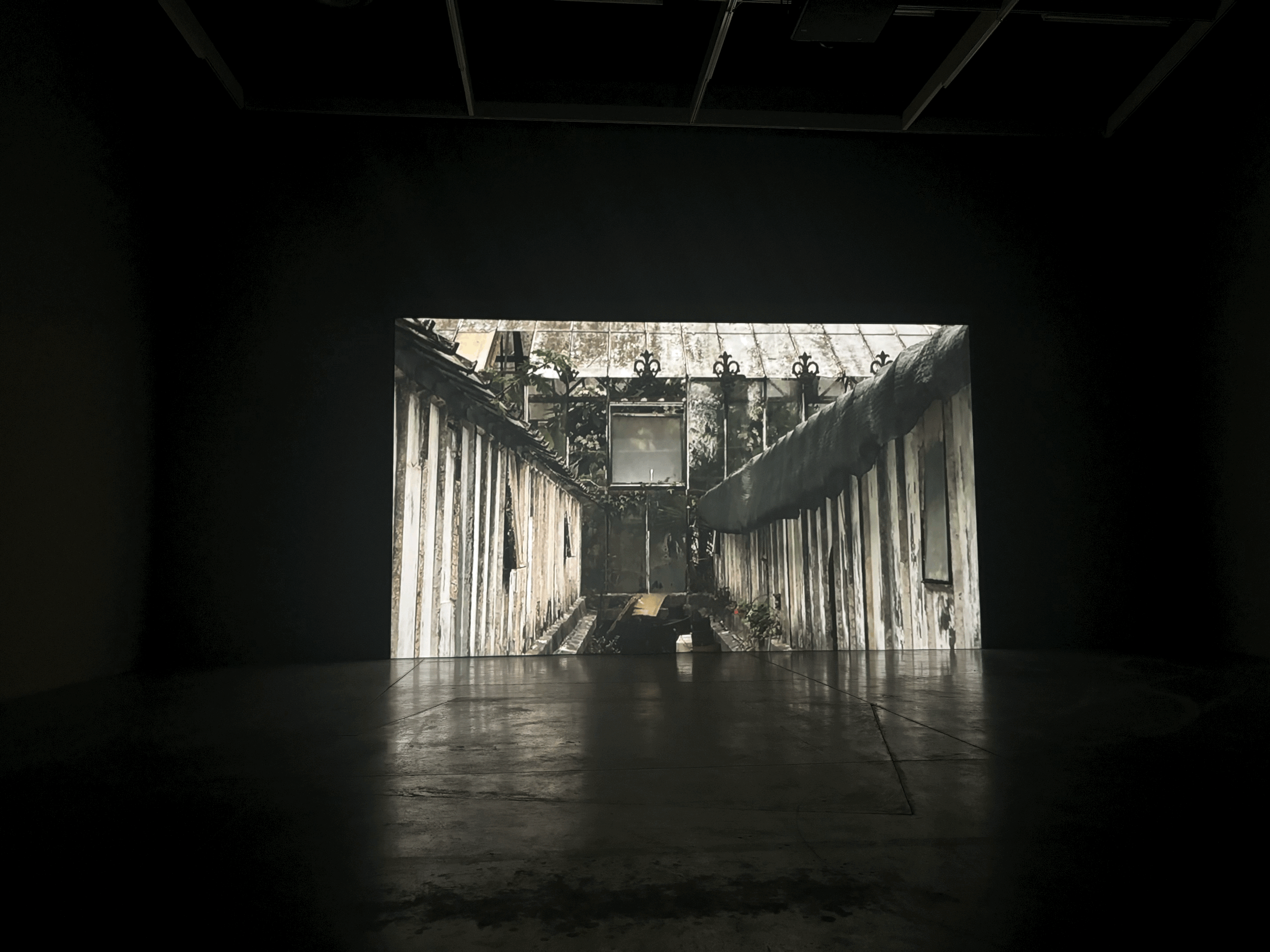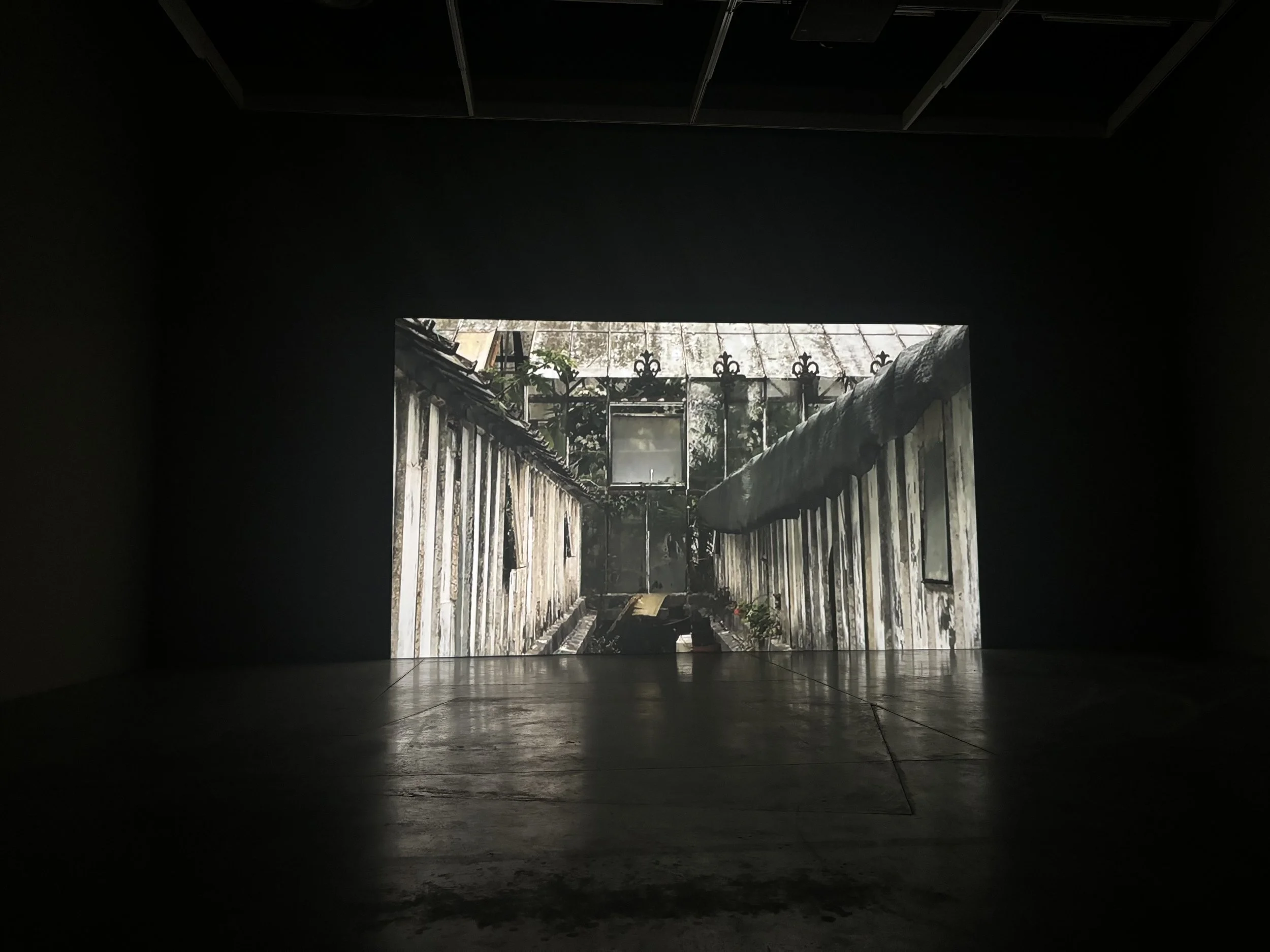late tate x hervisions
Experiencing HERVISIONS at Tate Britain
Finally made it to a Late Tate, luckily this one was hosted by HERVISIONS, founded by UAL Tutor, Zaiba Jabbar.
Walking into Tate Britain, I was instantly charmed by all the movement, the artists, and artist affiliates coming out in their artsy attire to see art. I showed up unsure how to participate but quickly found my footing.
There were two performances taking place, both very different but relevant to my practice.
Downstairs, right to the side of the staircase was a live DJ set accompanied by an MC hosted by Reprezent Radio. Instantly, I felt an ode to the Hip Hop origins that birthed the modern day art of ‘rap’. Behind the decks was two Black femmes raising the vibrations through sound in exchange for movement.
Pure instrumentation had us all in a trance, that is the power of performance. As a performer you have the ability to capture the attention of your audience. And in order to do that, you need a physical body. You need movement. Our eyes and ears follow your lead as you take us on the journey you’ve planned for us. My physical body talking, dancing, shouting, emoting is an instrument. Our bodies are the instruments that make all instruments work. There is a connection between the mind’s command and its domination over the flesh.
Are we machines? I thought while watching Nina Davies’ Bionic Step. I sat on the ballroom floor to watch humans mimic machines. The human body following the commands of a robot moving in front of screens in front of a live audience. And I wondered would this be as interesting if this was just robots making these movements? For me, the presence of flesh adds an additional layer of inquiry. I more interested in the relationship between humans and technology than technology itself. The flesh also serves as a reminder that this is labor.
Recognizing that performance is a form of mind control informs my practice. For that, I am cautious of implementing machine learning and AI into my performances. However, watching the performances inspired me to have larger conversations in my work. I don’t have to be ANTI-AI, but I can use these tools to challenge their use.
References
Tate. (2025). Late at Tate Britain. [online] Available at: https://www.tate.org.uk/whats-on/tate-britain/late-at-tate-britain[Accessed 20 May 2025].
research salon session one
A review on the power of collective research.
In our critical reflection seminar with Anna Branch, she offered an opportunity for students interested in research to come together and form a salon. The research salon is a student led group that congregates to discuss their research. Its intentions can be set forth by the students but based on last year’s salon, it seems like a space to encourage students sharing out their research as it relates to their art practice.
When presented with the offer, I decided this would be a valuable experience for me. Since joining the MA, I've had a desire to meet. with likeminded folks in the cohort and this allowed a space for me to form those connections. Also, the research salon provides a space to test out my research inquiries through getting responses from my peers.
After setting up a Whatsapp groupchat, we landed on our first meeting being in the MA Sculpture studio on the 5th Floor at 4pm after Wednesday’s lecture. Once Wednesday arrived, a peer, Hongyi Chen, shared their recent readings discussing “the role of the machine in human pscyhe.” A key part of his inquiry was the human desire to constantly improve. The readings provided questioned the dangers of screen usage and its ability takes us out of the present moment. By not being able to stay in the present, we miss out on life. Chen led with the example of being on a phone call while traveling to another destination. During this scenario, the person is unable to be present at a destination because its focus is on the screen. And the screens we look at are actually just ‘black mirrors’.
We learned more about the student’s art practice. He creates a binary code for his brushes and painting techniques to simulate an automated painting process based on the boundaries he set forth. The code is created using outlined parameters and he translates this code on canvas through repitition. The act of repetition is machine-like but the eyes gravitate towards the mistakes caused by human error. Following the reading, he led a discussion to examine the ways machine learning or automation shows up in our work or making process.
This was the first time I thought more about the role ‘black mirrors’ play in my performance practice. I often stray away from screens with hopes to occupy viewers attention with my body. However, I’ve been inclined to use more screens to stimulate the senses of my viewers. I question whether if the presence of a screen takes us out of the present moment, then where do we go? Where does our minds go when we scroll? And will I lose the attention of my audience by implementing more screens, more automation, more machines?
at the power plant
Key takeaways from Shelagh Keeley’s work at The Power Plant in Toronto.
Today, I had the pleasure of viewing a solo exhibition of Shelagh Keeley’s work at the Power Plant in Toronto. On view is a collection of her film notebooks followed by a screening of her films.
Kyoto Notebook, Shelagh Keeley
When entering the exhibition, we are greeted with Keeley’s archive that support the video work shown. In this archive, we get a look at her journals and sketches titled “Film Notebooks”. Her notes stretch from 1985-2017 and allows viewers insight to how her ideas that led to the films developed. At the center of Shelagh’s drawing practice is “based on an intuitive and embodied response”.
Keeley’s note taking and documentation is an example of how the process is just as important as the final result. I am often torn about if my process exposes my practice too much. But as a performer and image maker, I am learning how the documentation can be a work of its own. The notes, sketches, and journals kept of your work over the years can act as an extension of the initial work.
With this, I am challenged with considering how should I document my performance work. Even though I am an artist, I am a laborer. The manager is you, or who ever else views my work, whether it be a gallery, a publication, the audience is my boss. Without your support, I would not get work as an artist. With that, showing my process feels a bit like bringing my personal life to work.
The Unfinished Conversation: Encoding/Decoding, Shelagh Keeley
But unlike other roles, an artists intimate details shapes the larger perception of their work. Viewing the practice of Keeley’s record keeping led me to take a more intentional approach to archiving my performances. Although I want the live performance to be an experience one only gets by receiving, I think about the importance of other elements of the performance. I’ve began creating a catalog of the costumes I’ve created a detailing the reason for selecting each item. Since the characters I play will evolve over time, I can adopt methods to preserve their stories once the performance ends.
References
The Power Plant Contemporary Art Gallery. (2025). Shelagh Keeley: Film Notebooks 1985–2017. [online] Available at: https://www.thepowerplant.org/whats-on/exhibitions/film-notebooks-1985-2017 [Accessed 20 May 2025].
The Power Plant Contemporary Art Gallery. (2015). The Unfinished Conversation: Encoding/Decoding. [online] Available at: https://www.thepowerplant.org/whats-on/exhibitions/the-unfinished-conversation-encodingdecoding[Accessed 20 May 2025].






